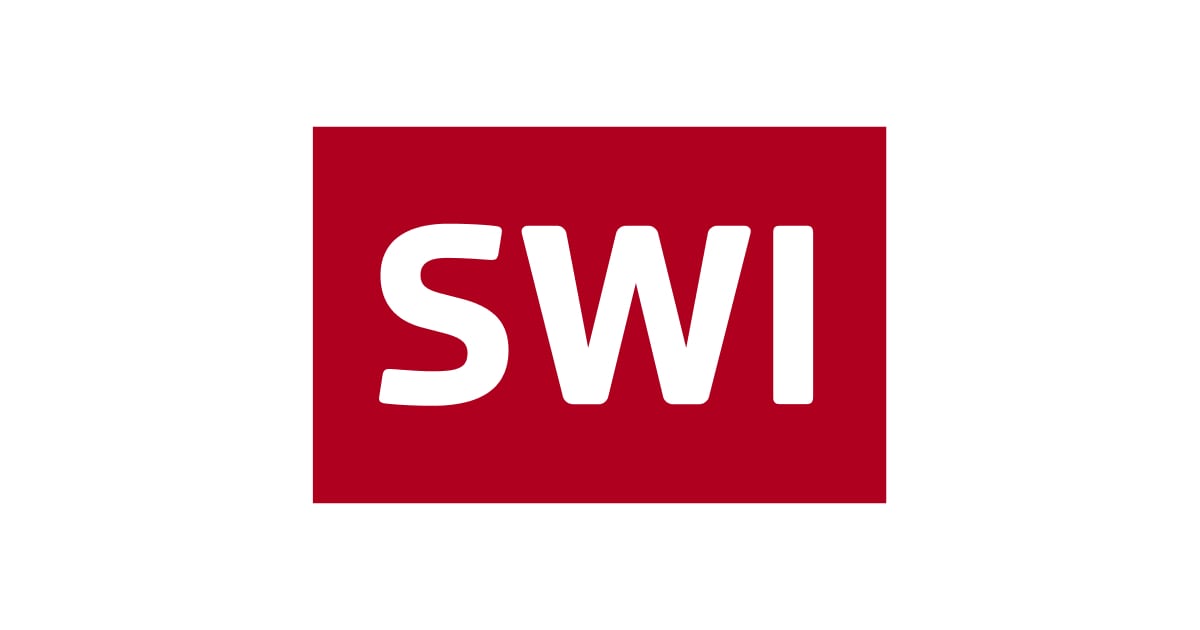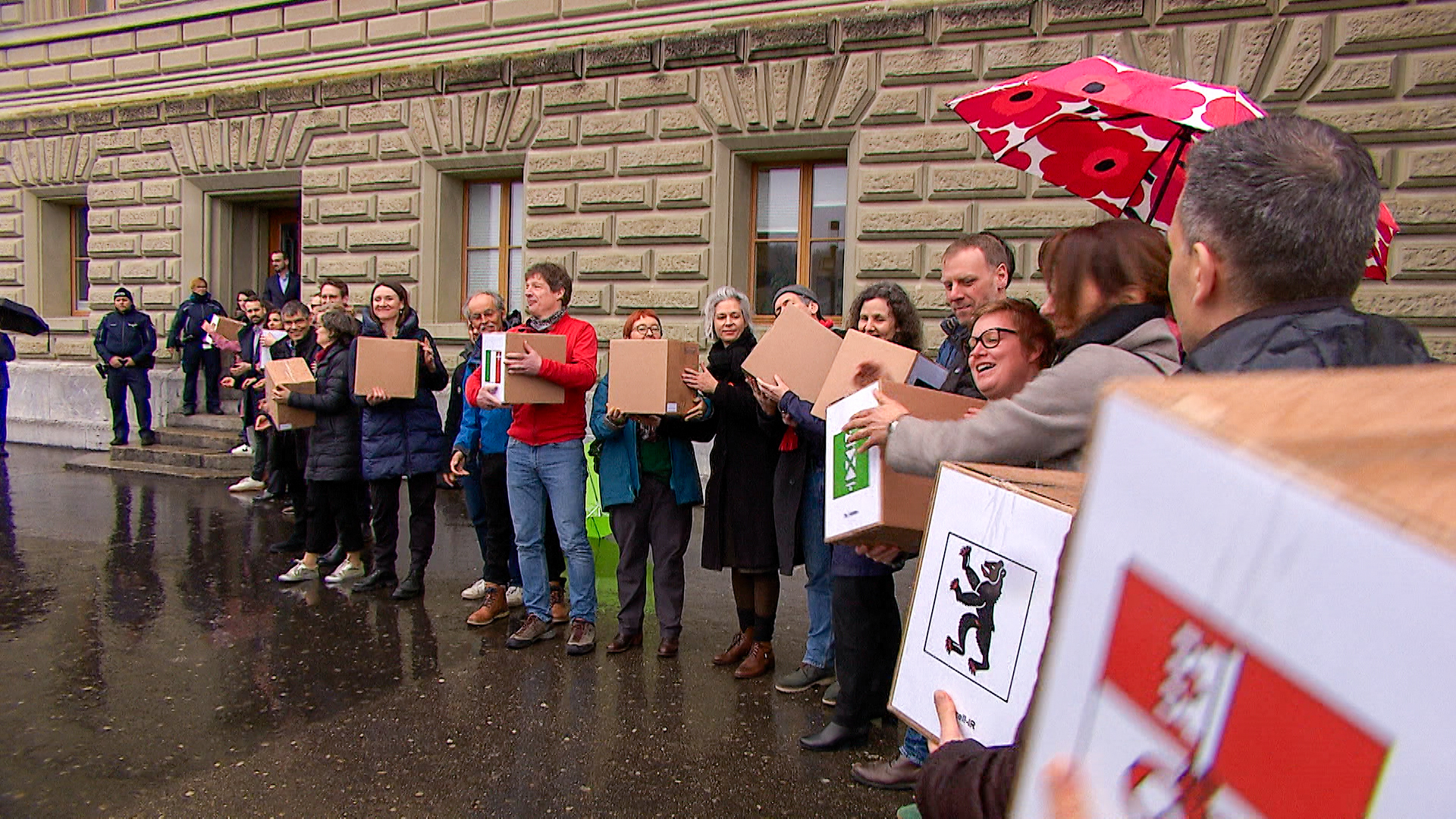
Explainer: How the new US tariffs are already impacting the Swiss economy

On August 1, US President Donald Trump announced a tariff of 39% for Switzerland. The effects are slowly becoming visible.
Only five countries have higher tariffs for their exports to the US than Switzerland. Of all the industrialised nations and European countries, Switzerland has the highest US tariffs. At the same time, the US has one of the highest shares of Swiss foreign trade. The tariffs were therefore very bad news for some industries. But what has happened since August 1?
What is the background?
On April 2, Trump declared the so-called Liberation Day, a package of import tariffs for a long list of countries. Switzerland was also on this list, with a tariff of 31%, which caused great unrest in Switzerland. However, the Swiss government and business community were optimistic that these could be lowered in negotiations. The government believed it had succeeded: in summer it spoke of a “deal” with 10% tariffs.
Then, on Swiss National Day of all days, Trump shocked Switzerland by announcing 39% tariffs on its products.
Read our analysis of the political consequences in Switzerland of Trump’s decision:

More
How Trump is manoeuvring Switzerland closer to the EU
Which sectors are most affected?
The exact effect the tariffs will have is only just beginning to emerge. However, certain conclusions can already be drawn.
The State Secretariat for Economic Affairs (SECO) assumes that around 10% of all Swiss exports will be affected. This is because pharmaceutical products and gold are exempt from the tariffs. However, these are the two sectors that contribute the most to the US trade deficit with Switzerland of almost CHF39 billion ($49 billion). It is presumably the foreign trade deficit that Trump has taken as the reference value for the level of tariffs.
The watch industry and the Swiss tech industry (which includes the mechanical, electrical and metal industries) are likely to suffer the most from the tariffs. Precision instruments, watches, jewellery and appliances are – alongside pharmaceutical products – the most important Swiss export products to the US.
The Swiss regions are affected very differently by the tariffs. In some cantons in western Switzerland, up to almost 30% of all employees work in the tech and watch industry. In turn, certain cantons have a particularly high proportion of exports to the US. As many companies were expecting the tariffs, they exported to the US in advance of the tariff announcement, so it is still too early to get an accurate picture.
Added to this is the relative weakening of the US dollar against the Swiss franc. This represents an additional burden for exporters, as their products are becoming more expensive.
What does this mean for the Swiss economy as a whole?
GDP growth in Switzerland fell to 0.1% in the second quarter, down from 0.7% in the same period last year. This development has long been anticipated. It was expected that the second Trump administration would take a more ruthless approach to trade policy. The weak economic phase is one thing; the uncertainty is more serious, according to SECO.
Nevertheless, SECO doesn’t believe a severe recession is imminent. Despite everything, the US market is not the most important sales market for the Swiss economy.
However, there will certainly be a financial slump. It is estimatedExternal link that Swiss companies will lose $9.5 billion (CHF7.6 billion) in turnover and $4 billion in profits. This is mainly in industries with high-value products, which would have to assume that their exports to the US would fall by a quarter. An initial assessmentExternal link by the KOF Swiss Economic Institute at federal technology institute ETH Zurich predicted a decline in GDP of up to 0.6% per year – even more if pharmaceuticals were also subject to tariffs.
Unemployment currently stands at around 2.7%. This is a rather low figure for Switzerland compared to the past 20 years. SECO’s forecasts predict an increase, albeit a rather moderate one: unemployment is expected to be 3%-3.5% in 2026.
The umbrella organisation of the Swiss economy, Economiesuisse, speaks ofExternal link 100,000 employees who will be directly affected by the tariffs. This does not include suppliers and service providers who could be indirectly affected. The government therefore wants to extendExternal link the instrument of short-time working, which proved its worth during the Covid pandemic.
The government quickly made it clear that it wants to advocate for lower tariffs. One of the ways it intends to do this is by making an “improved offer” to the US president. What such an offer might look like is being kept secret for negotiating reasons. (Counter-tariffs have already been ruled out by the Swiss side.)
Compared to the EU, for example, Switzerland can only make limited offers to the US. Although Switzerland has a very high GDP and high purchasing power, it has a population of only nine million. This is not a particularly attractive market for American export industries.
More
What does this mean for the US?
Switzerland is the sixth-largest foreign investor in the US and, unlike other countries, is invested in every single state, SECO notes. In addition, Swiss investments employ American labour with good wages. Should the outlook for investors become bleaker and they withdraw their investments, this would also affect the American economy in some areas.
In the medium term, a partial withdrawal from the US market can be expected. SECO’s aim is to diversify Swiss exports to more markets by means of trade agreements. This has long been a central pillar of the country’s foreign trade policy. Now it is becoming even more important.

More
The trade agreement between India and EFTA countries comes just at the right time
What will happen to pharmaceuticals and gold?
The two areas exempt from tariffs are the subject of much debate. They are central to Trump’s economic policy: during the election campaign he promised to lower drug prices, which he intends to do through sustained pressure on Swiss companies. He is also said to have a personal affinity for gold, which is sometimes used as an explanation for the lack of tariffs on it.
The products of Swiss pharmaceutical giants – which contribute a great deal to Swiss value creation – are not subject to customs duties. However, the companies are under great pressure to relocate their production to the US. Although the prices of medicines are largely set in the US, they are to be influenced in this indirect way and new jobs created at the same time.
The situation is different with gold. Switzerland is home to major gold refineries, which means that the internationally traded precious metal features prominently in import and export statistics, even though the industry is of little economic significance in Switzerland. Swiss politicians are openly discussing various scenarios as to how exports to the US could be redirected so that they no longer increase the Swiss trade deficit.
Edited by Benjamin von Wyl. Translated from German by DeepL/ts

More
Our weekly newsletter on geopolitics

In compliance with the JTI standards
More: SWI swissinfo.ch certified by the Journalism Trust Initiative































You can find an overview of ongoing debates with our journalists here . Please join us!
If you want to start a conversation about a topic raised in this article or want to report factual errors, email us at english@swissinfo.ch.